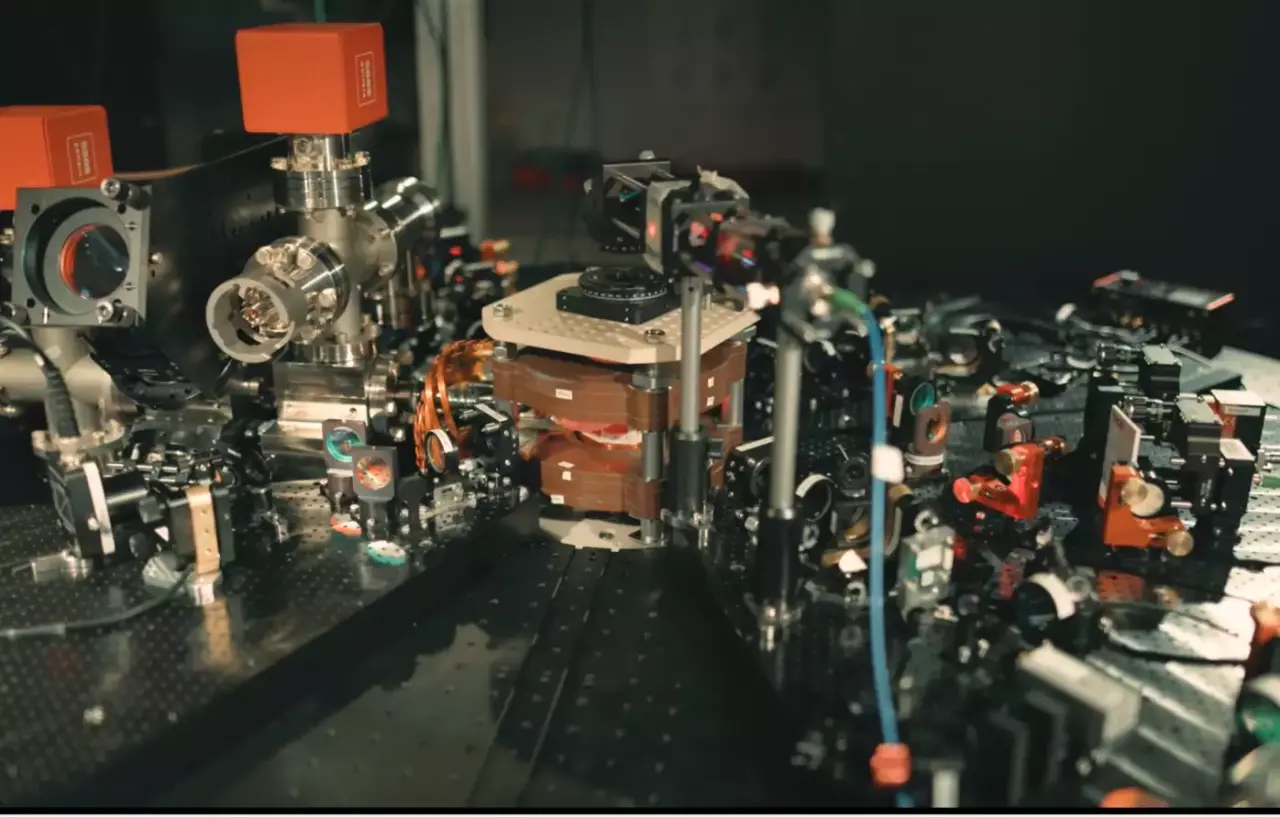5 February 2025
Philipp Preiss receives ERC Proof of Concept Grant
The project FermiChem uses ultracold fermions in quantum simulations to solve complex problems in quantum chemistry.
Dr Philipp Preiss, MCQST members and independent research group leader at the Max Planck Institute of Quantum Optics, has secured a Proof of Concept (PoC) grant from the European Research Council (ERC). These grants aim to bridge the gap between fundamental research and practical applications, helping to transform new scientific insights into tangible societal or commercial benefits. With his project, FermiChem, Philipp Preiss and his team will further explore the use of quantum simulators based on ultracold fermions to tackle complex problems in quantum chemistry. In the long term, the project seeks to expand the scope of fermionic quantum information processing and collaborate with academic and industry partners to identify real-world scenarios where this technology can provide value – even before fault-tolerant quantum computers become available.
Determining the ground states of systems with many interacting fermionic particles is one of the most difficult challenges in quantum information science. But solving this problem holds immense potential for materials science and quantum chemistry, as it can lead to breakthroughs in understanding complex molecular structures and predicting reaction pathways. Prospects are for example to accelerate the design of new catalysts, or optimize materials for electronics and batteries.
Using ultracold fermions in optical lattices is a promising experimental approach to simulate many-electron systems. Unlike qubit-based systems such as trapped ions or superconducting circuits, fermionic quantum gases inherently respect the exchange symmetries and conservation laws of fermions. This intrinsic compatibility makes them an efficient platform for simulating molecular wavefunctions, which are essential for accurately predicting chemical and physical properties.
Philipp Preiss’s team, in collaboration with the chemicals company Covestro, recently explored the possibilities of ultracold fermions in quantum chemistry with the publicly funded HFAK project. They adapted quantum chemistry methods from spin-based quantum computers to fermionic atoms in optical lattices and found that optical superlattices – which emerge from several interfering lattices in various wavelengths and intensities – and optical tweezers naturally implement the required circuits for computations. The teams developed automated code for fermionic sequences and estimated the resources needed to simulate molecular wavefunctions. Their findings were published last week in PRX Quantum.
 © Preiss Group / MPQ
© Preiss Group / MPQ Towards a new fermionic quantum computing paradigm?
The new FermiChem project will now accelerate the deployment of these ideas towards practical use cases in quantum chemistry, focusing on three key objectives. First, the team aims to develop fermionic quantum circuits capable of measuring correlation functions essential for the understanding of condensed matter physics. Second, they will build software tools to connect the UniRand quantum simulator to high-level programming languages, enabling the execution of fermionic circuits on hardware. Lastly, the project will validate a novel tweezer architecture designed to enhance motional coherence in ultracold atom systems, a critical step toward improving computational performance.
“At the moment, our methods with fermionic quantum simulators apply only to small test molecules, but we see significant potential for an alternative quantum computing paradigm compared to spin-based quantum computers,” explains Philipp Preiss. „The Proof of Concept grant will allow us to develop our hardware stack and, most importantly, connect with new partners from academia and industry to identify where fermionic quantum processing can truly make a difference.”
ERC Proof of Concept grants – each worth €150,000 – support researchers who have already made significant progress in exploring the innovation and commercialization potential of their findings. Activities include prototyping, market analysis, and intellectual property management, ensuring that scientific breakthroughs move closer to practical use.
Article originally published on
MPQ website.
Publication
Simulating Chemistry with Fermionic Optical Superlattices
Gkritsis, F., Dux, D., Zhang, J., Jain, N., Gogolin, C. and Preiss, P. M.
PRX Quantum 6 (1), 010318 (2025)
DOI:
10.1103/PRXQuantum.6.010318